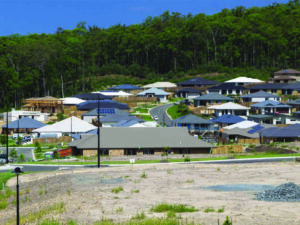
With the Australian summer approaching, keeping your rental property cool will be a priority. However, when you’re renting, there are limits to what you can do.
Take a look at some simple, low-cost cooling methods and tips to negotiate with your landlord so you have a more comfortable place this summer.
Low-cost home cooling techniques
Passive cooling techniques can help keep your rental property comfortable without you making big changes.
• Close blinds and curtains: Direct sunlight can turn your home into an oven, especially during the hottest parts of the day. By closing blinds or curtains when it’s hottest outside, you can
block heat from entering and maintain cooler temperatures indoors.
In Australia, heat mostly streams in from the north during the day and the west in the afternoon. Look to cover windows that face in these directions when the sun is at its hottest.
• Use fans: Portable fans are a simple way to create airflow and keep rooms cool. To maximise their effectiveness, position portable fans near windows at night to draw in cooler air. If you have a ceiling fan with a reverse setting, make sure it’s circulating air in the correct direction to cool your space.
New models of fans have timers so they can turn off automatically. They come with a remote control and have a low noise ‘sleep’ mode. The benefit when you’re renting is that you can take your fan to your new place when you move.
• Ventilate during cooler hours: Open your windows during early mornings and late evenings to allow cool air to circulate through your home. Once the outdoor temperature rises, close them to trap the cooler air inside.
• Limit appliance use: Ovens, stovetops and clothes dryers can raise the temperature in your home. Opt for salads, outdoor barbecues or light stovetop cooking, and use a clothesline to dry your laundry.
If it’s very hot remember to unplug your devices; they usually emit heat as they charge.
• Invest in a portable air conditioner: If you can’t get approval to install a built-in air conditioner, consider buying a portable air conditioning unit or an evaporative cooler. Portable air conditioners don’t require installation and can be moved from room to room so they are a great option for renters.
Talk to your landlord or property manager
If passive cooling isn’t enough and your rental property feels unbearable in summer, consider asking your property manager if they can submit a request to the landlord to install an air conditioner or change the blinds or awnings around the property.
Although landlords in Australia are not legally obligated to provide air conditioning in rental properties, some may be open to the idea—particularly if they see it as a way to make their property more appealing to future tenants or buyers.
When making a request for an air conditioner:
1. Provide a well-reasoned request: Explain how an air conditioner would benefit both you and future tenants. Highlight that installing one would increase the property’s value and make it more comfortable during the intense Australian summers. Take note of the indoor temperature at different times during the day and night (even with the fans on) and share this as part of your request.
2. Get quotes: Do some research and provide your property manager with a few quotes for air conditioning units and installation costs. This can make the process easier for the landlord.
3. Negotiate a rent increase or contribution: In some cases, you may offer to pay a slightly higher rent to cover the cost of the air conditioner or contribute to the installation expenses. This can make the idea more appealing to landlords who may be reluctant to cover the full cost. Before you make this offer, have a chat with your property manager as it may not be necessary to pay more money.
Finally, while it’s not compulsory for rental properties to have
air conditioning, landlords are required to provide a home with adequate ventilation. What’s more, in most states, your landlord will be required to service and repair an existing air conditioning unit. You will most likely be required to clean the filters, but the landlord needs to keep it in good working order.
Take a look at what’s included on your contract and review the rental laws in your state so you know your rights in relation to air conditioning.
Looking for a rental property with air conditioning? Reach out to our amazing renta team at rentals@northgc.com.au today.




